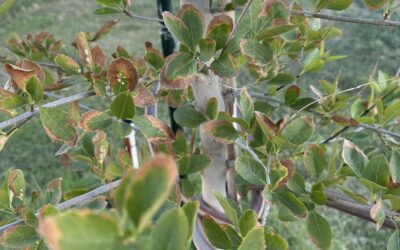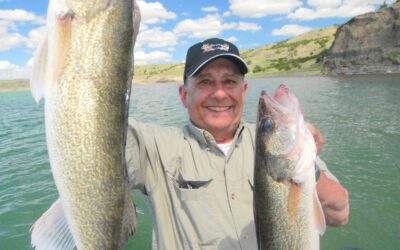Two of the most sought-after fish in the upper Midwest are the bass and walleye and as the water temperatures begin to rise, these fish become more active.
The largemouth Bass, pre-spawn when the water temperatures hit 48 to 55 degrees, when the begin to move from deep water to the shallow water near where the spawn areas.
The spawning activities as water temperatures reach 62˚F to 65˚F, which can go either way depending on where you’re fishing.
During the spawn, I hit the shallow water hard, and depending on where you’re, fishing using jigs, jerk baits, and spinner baits.
The main thing an angler needs to do during this time of the year, is to slow down your presentation as the water temps, are low and because fish are cold blooded, the water temperatures haven’t warmed up enough and because of this, everything is in slow motion.
As spring arrives, the male largemouth, who fanned out a depression, their nest, doing their best to entice the female to his nest
Male largemouth bass during the spawn become can be very ornery and does everything it can to keep the panfish and other nest robbers at bay.
At the post-spawn lull, fish are attempting to recover from the energy expended during the spawn, where the bite can be slow a week or two, week or so.
But as water temperatures rise into the 70s, largemouth bass will form loose schools in open water, over vegetated flats, or some type of structure.
The largemouth bass will seek areas that have lots of different structure and cover features in a small zone, so they can move throughout the day to rest and feed without expending too much energy.
Docks having lot of vegetation underneath, with a rapid change in depth are an excellent starting point.
of water and happens earlier in rivers than in lakes, in shallower lakes than in deeper lakes, in smaller lakes than in larger lakes and in poor water clarity lakes than in clearer lakes.
Walleyes spawn over rock, rubble, gravel and similar hard structure in rivers and windswept (north side of water body) lake shores, benefit of the sun, warmer quicker in water 1 to 6 feet deep, where current clears away fine sediment helping to aerate the eggs.
There will be a lull following the spawn lasting from a few days to a couple weeks depending on the fish and water body. Once the fish recover the post-spawn bite can be more prolific than during the spawning period.
Walleye and saugeye like hard structure transition areas, with easy access to deeper water, near wind swept shorelines and points for most of the year.
They ‘ll l retreat to deep main lake humps and structure in the summer months, they’re a cold-water species most comfortable in water between 50˚F to 70˚F.
The baits I use this time of the year, Include jigs with white, chartreuse or naturally colored bodies
On crank baits, it works best if you remove the treble hooks from the bait and just replace the back hook with a medium-sized straight shank single point hook.
This allows the angler to bang their crank baits into and across the bottom without getting hung up.
The slower your retriever during cold water fishing, gives the lethargic walleyes to locate and take the bait
A several of the crank baits I use during this time of the year are the perch, baby shad, blue ghost and the bluegill.
As the water temps rise, the fish will start to warm up and become more active and aggressive.






0 Comments